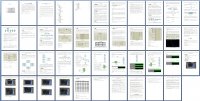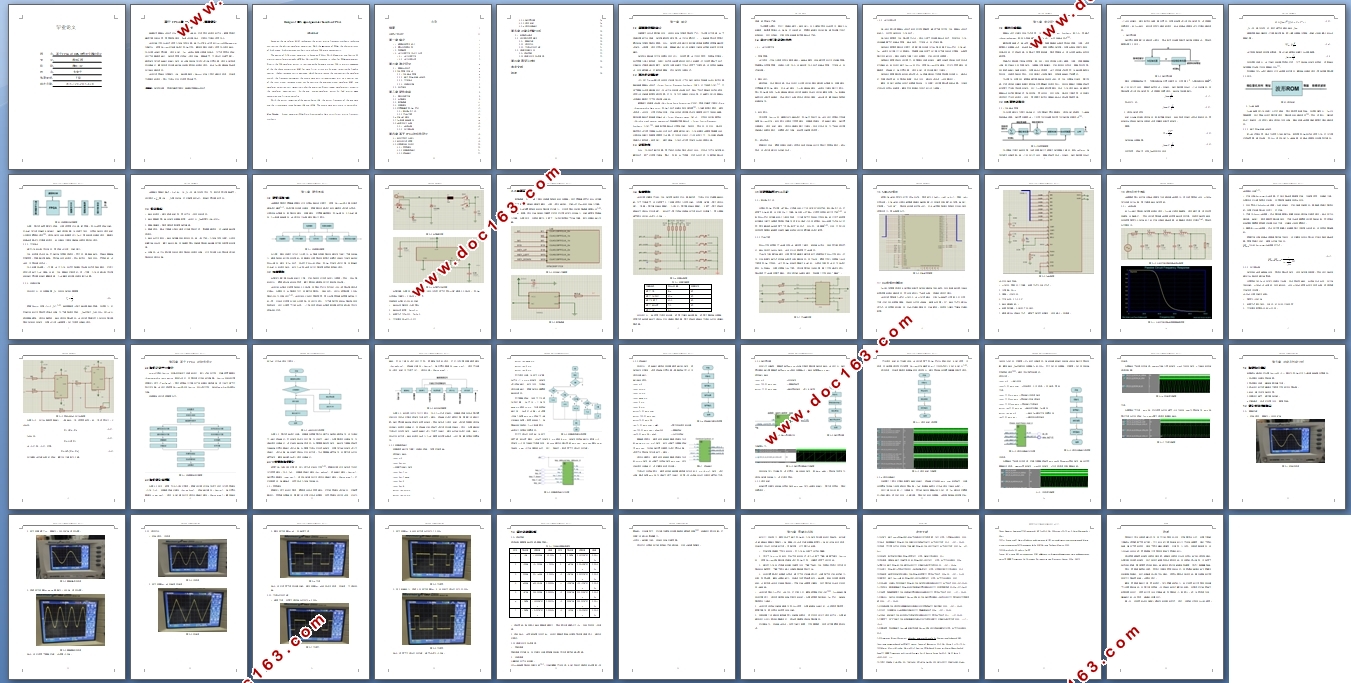基于FPGA的DDS信号发生器的设计

基于FPGA的DDS信号发生器的设计(任务书,开题报告,外文翻译,论文12300字)
摘要
直接数字频率合成技术以波形ROM技术为基础,可实现任意波形的产生。随着现场可编程门阵列的出现,其具有高速度、高集成化等特点,可更加方便的实现DDS。
本设计基于FPGA技术实现DDS信号发生器。基于ALTERA公司的QuartusII和modelsim仿真平台,采用Verilog-HDL语言进行FPGA开发。最后在硬件系统上实现DDS波形输出。DDS主要由相位累加器、波形ROM、DA、滤波电路等主要模块组成。为了实现灵活控制,设计了按键响应单元,旨在实现用户控制(波形切换,频率调节,方波占空比调节等)。响应信号作为控制单元的输入信号,经运算后的信号分别进入相位累加器、波形ROM和波形选择单元,最后在波形选择单元输出参数既定的阶梯状波形。经由DAC数模转换和滤波放大输出模拟波形。
本设计实现输出分辨率为1Hz,输出频率在1Hz——1MHz之间可调的正弦波、三角波方波等任意波形。其中方波占空比可实现灵活调节。
关键词:信号发生器 现场可编程门阵列 直接数字频率合成技术
Design of DDS signal generator based on FPGA
Abstract
Based on the waveform ROM technology,the direct digital frequency synthesis technique can realize the arbitrary waveform generation. With the emergence of FPGA, the characteristics of high speed, high integration can help us to achieve DDS more conveniently. [资料来源:http://doc163.com]
The design of DDS signal generator is based on FPGA. With Modelsim and Quartus II simulation platform created by ALTERA, Verilog-HDL language is taken for FPGA development. Finally, the DDS waveform output is realized on the hardware system. DDS is mainly composed of the the phase accumulator, ROM, DA, wave filter circuit etc.. In order to realize the flexible control, the key response unit is designed, which helps to realize the user control (the waveform switch, the frequency adjustment, the square wave duty ratio adjustment, etc.). As a control unit of the input signal, response signal will be sent into the operation signal, waveform ROM and waveform selection unit respectively after the operation.Finally ladder waveform will appear in the waveform selection unit . In the end ,analog waveform output by DAC digital mode conversion and filtering amplifier.
With the output resolution of the design being 1Hz, the output frequency of the sine wave and the triangle wave range between 1Hz and 1MHz. The square wave duty cycle is adjustable.
Key Words: Signal generator;FPGA Field Programmable Gate Array;Direct digital frequency synthesis
[来源:http://Doc163.com]

目录
摘要 I
ABSTRACT II
第一章 绪论 1
1.1 课题的背景及意义 1
1.2 国内外发展状况 1
1.3 发展趋势 1
1.4 本文主要工作及论文内容 2
1.4.1 本文主要工作 2
1.4.2 本文主要内容 3
第二章 理论研究 4
2.1 频率合成技术 4
2.2 DDS原理及特点 4
2.2.1 DDS基本原理 4
2.2.2 基于FPGA的基本结构 6
2.2.3 工作特点 7
2.2.4 系统的计算 7
2.3 技术指标 8
第三章 硬件电路 9 [资料来源:http://Doc163.com]
3.1 硬件系统方案 9
3.2 电源模块 9
3.3 有源晶振 11
3.4 按键模块 12
3.5可逻辑编程FPGA芯片 13
3.5.1 EP4CE6F17C8 13
3.5.2 JTAG下载 13
3.6 SDRAM模块 14
3.7 DA数模转换模块 14
3.8滤波及放大电路 16
3.8.1 滤波电路 16
3.8.2 放大器电路 17
第四章 基于FPGA 的软件设计 19
4.1软件开发平台简介 19
4.2软件设计流程图 19
4.3主要模块软件设计 20
4.3.1顶层模块 20
4.3.2按键响应单元 21
4.3.3控制单元 23
4.3.4相位累加器 24
4.3.5波形ROM 24
4.3.6波形选择单元 25
第五章 功能及性能分析 28
5.1 软硬综合调试 28
5.2 设计要求实现演示 28
5.21 频率可调 28
5.22 波形可选 30
5.23 方波占空比可调 31
5.3 误差及杂散分析 33
5.31实验测量 33
5.32误差分析及改进措施 33
第六章 展望与总结 35
参考文献 36
致谢 38 [资料来源:http://doc163.com]
